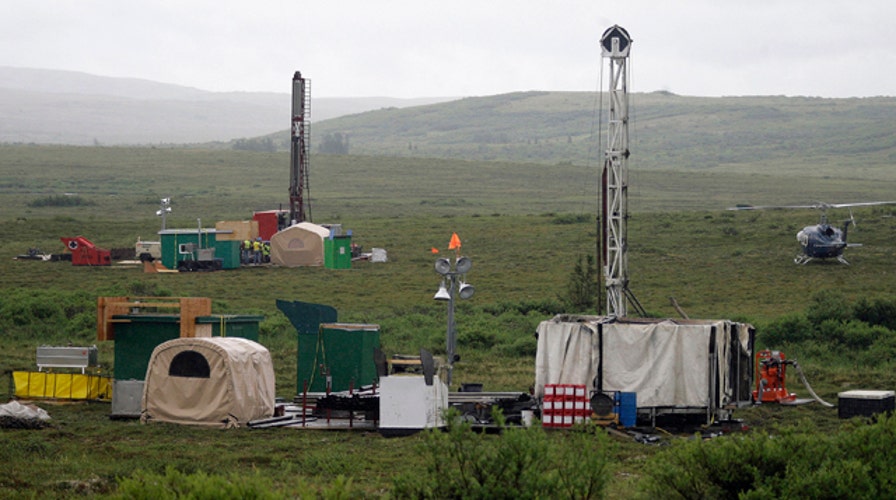Investors sue EPA over veto of Pebble Mine in Alaska
Dan Springer reports on copper, gold mine
On-again, off-again plans for the world's largest gold and copper mine could be back on again, after a federal judge in Alaska issued a preliminary injunction blocking the Environmental Protection Agency from its ongoing efforts to bury the project.
Pebble Partnership, the Canadian company behind the project, which would take place near Anchorage, claims the regulatory agency has conspired illegally with opponents of the mine to devise scientific and environmental justifications for blocking it. Salmon fishermen in Washington state and Alaska, Native American groups and environmental organizations have opposed the massive project for several years, and had appeared to have gotten it scuttled prior to Tuesday's ruling by U.S. District Judge Russel Holland, in Anchorage.
“We expect the case may take several months to complete,” Pebble Partnership CEO Tom Collier said Tuesday after the U.S. District Court ruling in Anchorage. “This means that, for the first time, EPA’s march to preemptively veto Pebble has been halted.”
[pullquote]
Holland's ruling stops the EPA from taking action against the project until he makes a decision on Pebble’s lawsuit claiming the agency broke the law to stop the mine. Pebble Partnership's lawsuit claims the EPA secretly relied on opponents of the mine to help craft a “patently biased” environmental assessment that determined the project could be devastating for the salmon of Bristol Bay.
“Instrumental to this scheme was EPA’s clandestine use of the de facto advisory committees – made up of individuals and groups who have been vehemently opposed to any mining of the Pebble deposit – to help the agency plan and then implement unprecedented steps designed to guarantee that no mining of the Pebble deposit would ever take place,” the company’s lawsuit claims.
Holland’s preliminary injunction order indicates he believes Pebble Partnership has a chance to prove its case. But EPA spokeswoman Jennifer Colaizzi expressed doubt that the judge will ultimately side with the mining company.
“EPA hopes the litigation is resolved expeditiously so the agency can move forward with its regulatory decision-making,” she said in an e-mail to McClatchy News Service.
[image]
Supporters of the mine, which would be the largest open pit mine ever dug and would reach Grand Canyon-level depths, say it would yield more than 100 million ounces of gold, 80 billion pounds of copper and other precious minerals. But critics, including Sen. Maria Cantwell, D-Wash., say it would damage the ecosystem of Bristol Bay and threaten 14,000 fishing jobs. EPA Administrator Gina McCarthy, who sought to regulate the mine out of development using the agency's authority under the Clean Water Act, has said it would be devastating to the region's environment.
Mining giants Anglo American and Rio Tinto, part of the original Pebble Partnership, have backed out, Northern Dynasty Minerals looking for financial backing to keep the project alive.
Controversy over the EPA's role in the project surfaced this summer, when a former EPA official suspected of being involved in the agency's effort to kill the mine went mysteriously off the grid, when lawmakers sought to question him. Emails from Phillip North, a now-retired Environmental Protection Agency employee, seem to show the Alaska-based biologist tried to get the Pebble Mine project scrapped as far back as 2008. Those emails -- and memos indicating government officials worked early on with tribal leaders and environmental groups to oppose the venture -- raised questions about the agency's claims that when it ultimately vetoed the gold-and-copper mine project, it did so based on scientific evidence.
Emails from North’s account show that he “appeared to have played a key role in the EPA’s decision to pursue a veto,” Caitlin Carroll, a spokeswoman for the House Oversight and Government Reform Committee, told FoxNews.com. North still has not been located to explain his role in the affair.





